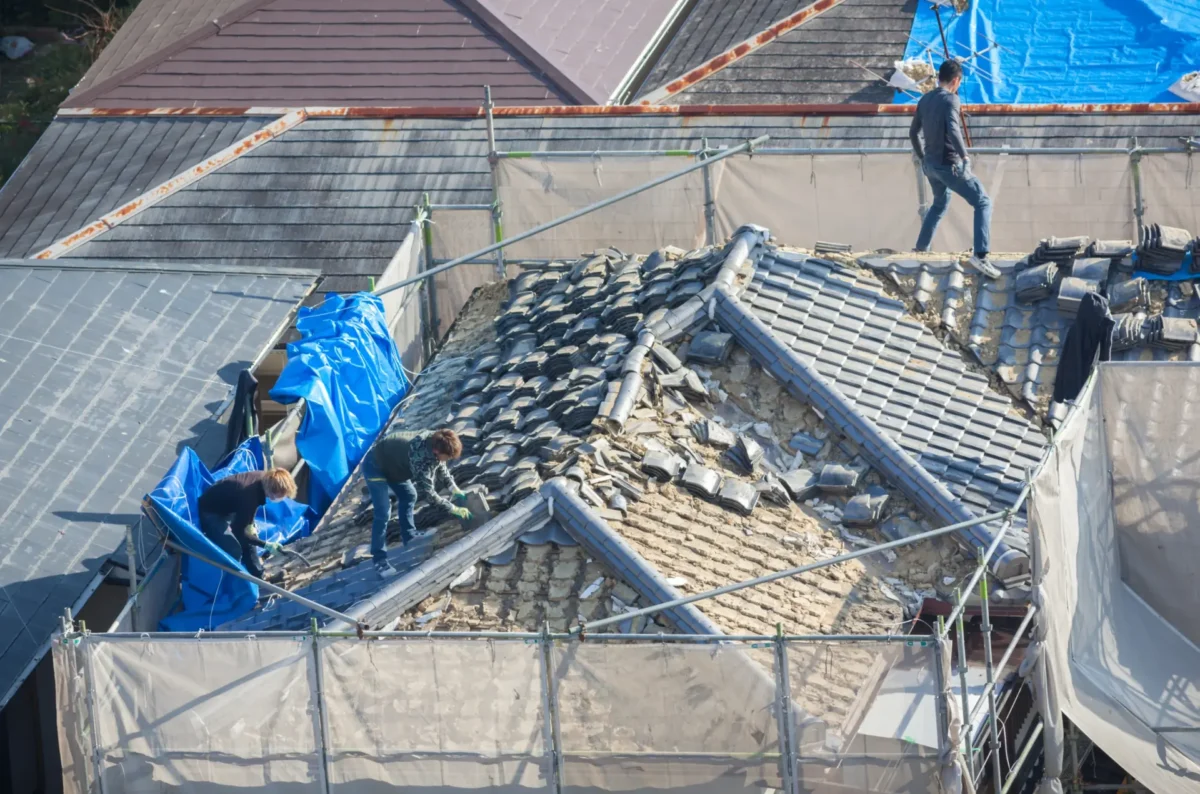Roof Talk: 3 Types of Common Roof Noise: Causes and Action to Take

Posted on December 18, 2023 by Phillip Camerer
Have you ever been at home or in your office suddenly heard a strange noise from above? It’s not your imagination—it’s your roof talking to you.
Understanding the root cause of roof noise can help identify potential issues before they escalate, whether a subtle creaking or a more alarming rumbling sound. There are three types of roof sounds you might encounter.
- Creaking
- Rumbling and Roaring
- Scratching, Tapping, or Thumping
In today’s blog, we’ll delve into these three everyday roof noises and give specific actions you should take for each.
1. Creaking: The House Settling or Something More?
Creaking is the most common noisy roof phenomenon. Often, it’s simply the sound of your house settling as temperatures change. Wood and other materials expand and contract with heat and cold, making these usually harmless noises.
However, persistent or loud creaking could indicate structural issues. If the creaking is accompanied by visible roof sagging or cracking, it’s time to call in the experts.
Action to Take: Routine inspections can help determine if creaking is just your house settling or a sign of something more serious.
2. Rumbling and Roaring: Weather Woes or Wear and Tear?
A rumbling or roaring sound from your roof often points to external factors. High winds can cause loose shingles or tiles to flap, creating a rumbling noise.
That sound might also result from debris like branches and leaves caught in your gutters or blown across the roof. But if these noises occur frequently without windy conditions, they could signal wear and tear.
Action to Take: Check for loose shingles and clear debris from gutters and the roof’s surface. Persistent rumbling after you’ve taken these measures might require professional assessment.
3. Scratching, Tapping, and Thumping: Wildlife or Something Else?
Scratching, tapping, or thumping sounds are usually the work of wildlife. Small animals, like birds and squirrels, can take refuge in your roof, primarily if gaps or openings exist. While these visitors might seem harmless, they can cause significant damage over time.
Another possibility could be large branches or debris falling on the roof. Check for damage after storms, as such impacts can compromise the integrity of roofing materials.
Action to Take: Inspect any openings where animals might enter and seal them. If you suspect wildlife has already made a home on your roof, consider professional pest removal services.
Other Sounds To Listen For
Some additional roof sounds you might notice can include:
- Dripping
- Popping
Dripping Sounds: This may indicate a leak. It’s essential to address this quickly to prevent water damage. Left uninspected, it can lead to mold growth and structural weakness.
Popping Noises: These are often due to temperature fluctuations affecting roofing materials. They’re usually harmless, but you should check on persistent popping, as it may signal expansion issues in your attic or roof deck.
Final Thoughts
Understanding a noisy roof’s root cause can save you many headaches and costly repairs. Regular maintenance and timely inspections are essential. Consulting with roofing professionals is always best if you need clarification on a particular sound or its severity. Remember, a sound roof means a safe home or business.
For more information or to schedule a roof inspection, contact Phillip Camerer Roofing at (417) 451-5479. We’re here to ensure your peace of mind, one roof at a time.
